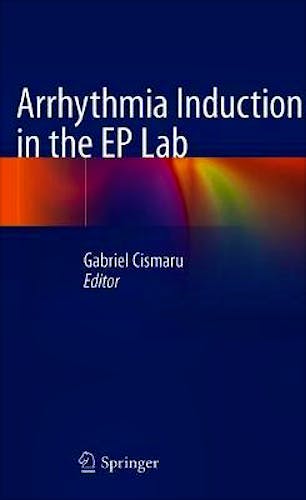

No hay productos en el carrito



Arrhythmia Induction in the EP Lab
Cismaru, G.
1ª Edición Enero 2019
Inglés
Tapa dura
250 pags
500 gr
16 x 24 x 2 cm
ISBN 9783319927282
Editorial SPRINGER
LIBRO IMPRESO
-5%
103,99 €98,79 €IVA incluido
99,99 €94,99 €IVA no incluido
Recíbelo en un plazo de
2 - 3 semanas
LIBRO ELECTRÓNICO
-5%
114,39 €108,67 €IVA incluido
109,99 €104,49 €IVA no incluido
Acceso On Line
Inmediato
1 Introduction: Why do we need arrhythmia induction.- 2 Isoprenaline.- 3 Adrenaline.- 4 Atropine.- 5 Salbutamol.- 6 Caffeine.- 7 Adenosine.- 8 Dobutamine.- 9 Dopamine.- 10 Noradrenaline.- 11 Aminophylline.- 12 Inducibility of ventricular fibrillation with flecainide and ajmaline during programmed ventricular stimulation in patients with Brugada syndrome.- 13 What to do when clinical arrhythmia is uninducible. Stepwise approach.
This book focuses on how to induce clinical arrhythmias in the electrophysiology (EP) laboratory, a procedure that is indispensable for analyzing the underlying mechanisms, and identifying the most effective treatment of the arrhythmia. In the main part of the book, the authors share their own experiences with 13 different medications that can be injected or infused for arrhythmia induction - ranging from isoprenaline and atropine to ephedrine - all of which can be easily found in any cardiology department.
Each chapter begins with a description of the drug's chemical structure and mechanism of actions, then illustrates the infusion preparation, dosage and side effects and lastly analyzes its electrophysiological properties and highlights the most important clinical studies on it. For each drug the authors list - in dedicated tables - administration protocols from their own hospital.
This book is of interest to postgraduate students, cardiology residents, cardiologists and pediatric cardiologists with special interest in arrhythmias, as well as to trainees, technicians and nurses involved in the EP lab.
Dr. Cismaru Gabriel earned his MD degree in 2005 from the "Iuliu Hatieganu" University of Medicine and Pharmacy, Cluj-Napoca (Romania) and received his PhD in medicine in 2016 from the same university. During residency he trained in cardiology and invasive cardiology at CHU Clermont-Ferrand France and CH Dinan (France). After completing his residency in cardiology, Dr. Cismaru began his electrophysiology fellowship at the Insitut Lorrain du Coeur et des Vaisseaux Louis Mathieu, Nancy-France. In 2011 he started working at the Electrophysiology Laboratory of the Rehabilitation Hospital Cluj-Napoca. He currently performs catheter ablation for simple cardiac arrhythmias, like atrial flutter, supraventricular tachycardias and WPW syndrome, but also for complex arrhythmias: atrial fibrillation, ventricular tachycardia and ventricular fibrillation.
His main research interests are: arrhythmias, catheter ablation of atrial fibrillation and ventricular tachycardia, pacemaker and internal defibrillator implantation. He has authored or coauthored peer-reviewed articles on cardiac arrhythmias, electrophysiology and catheter ablation. He is co-author of a number of book chapters and editor of following 2 books in the field of electrophysiology: Bedside Procedures and Brugada Syndrome.
© 2025 Axón Librería S.L.
2.149.0